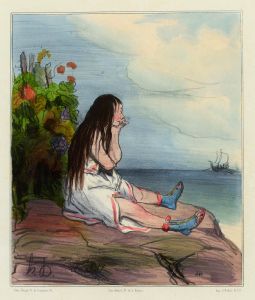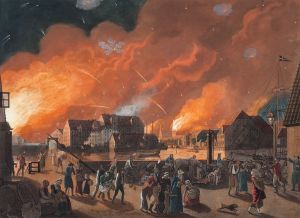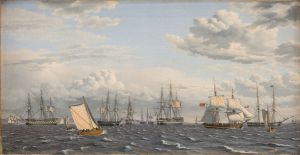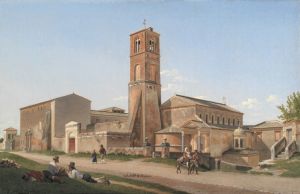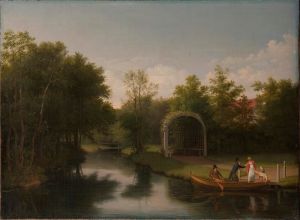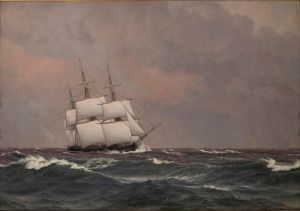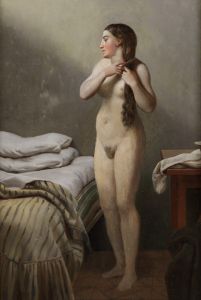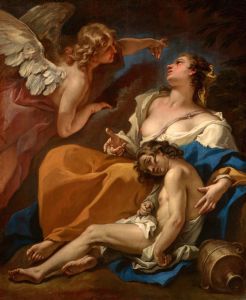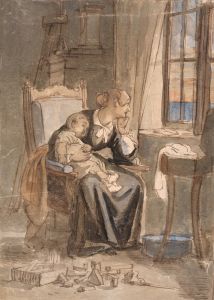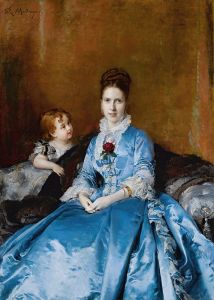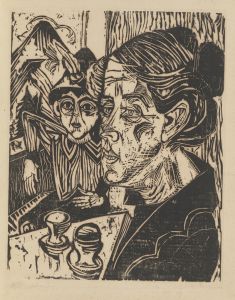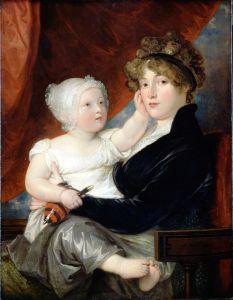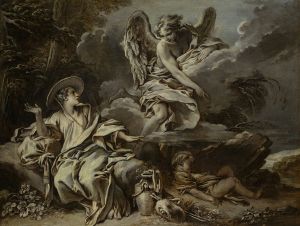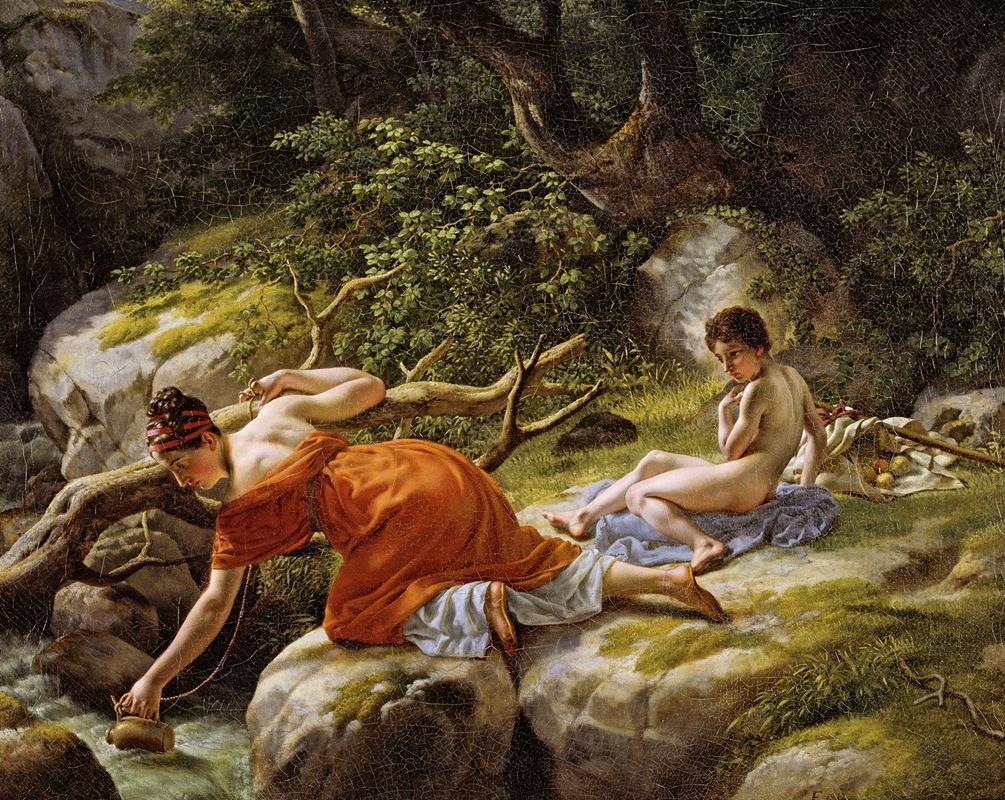
Hagar and Ismael in the Desert
A hand-painted replica of Christoffer Wilhelm Eckersberg’s masterpiece Hagar and Ismael in the Desert, meticulously crafted by professional artists to capture the true essence of the original. Each piece is created with museum-quality canvas and rare mineral pigments, carefully painted by experienced artists with delicate brushstrokes and rich, layered colors to perfectly recreate the texture of the original artwork. Unlike machine-printed reproductions, this hand-painted version brings the painting to life, infused with the artist’s emotions and skill in every stroke. Whether for personal collection or home decoration, it instantly elevates the artistic atmosphere of any space.
Christoffer Wilhelm Eckersberg, often referred to as the "father of Danish painting," was a prominent figure in the Danish Golden Age of art. His painting "Hagar and Ismael in the Desert" is a notable work that reflects his mastery of neoclassical style and his ability to convey deep emotion through his subjects.
Eckersberg was born in 1783 in Blåkrog, Denmark, and he studied at the Royal Danish Academy of Fine Arts in Copenhagen. He further honed his skills in Paris under the tutelage of Jacques-Louis David, a leading neoclassical painter. Eckersberg's time in Paris and his subsequent travels to Rome greatly influenced his artistic development, allowing him to blend classical themes with a keen attention to detail and realism.
"Hagar and Ismael in the Desert" is based on the biblical story from the Book of Genesis. The narrative tells of Hagar, the Egyptian maidservant of Sarah, Abraham's wife, and her son Ismael. After the birth of Isaac, Sarah's son, Hagar and Ismael were cast out into the desert. The painting captures the moment of despair and divine intervention when Hagar, having run out of water, fears for her son's life. An angel appears to reassure her and reveal a well of water, saving them both.
Eckersberg's depiction of this scene is characterized by its clarity and emotional depth. The composition is carefully structured, with Hagar and Ismael positioned prominently in the foreground. Hagar is shown in a moment of anguish, her face turned upwards as if seeking help from above, while Ismael lies exhausted beside her. The barren desert landscape emphasizes their isolation and vulnerability, yet the presence of the angel introduces a sense of hope and divine providence.
The painting is notable for its use of light and shadow, which Eckersberg employs to enhance the dramatic tension of the scene. The stark contrast between the bright illumination of the angel and the darker tones of the desert underscores the theme of salvation amidst despair. Eckersberg's attention to anatomical accuracy and his skillful rendering of textures, such as the folds of Hagar's clothing and the roughness of the desert terrain, demonstrate his technical proficiency.
Eckersberg's work often reflects his interest in human emotion and the exploration of moral and philosophical themes. In "Hagar and Ismael in the Desert," he not only tells a biblical story but also invites viewers to contemplate themes of faith, survival, and divine intervention. The painting is a testament to Eckersberg's ability to combine narrative depth with visual precision, making it a significant piece in his oeuvre.
Today, Christoffer Wilhelm Eckersberg is celebrated as a central figure in Danish art history, and his works continue to be studied for their contribution to the development of 19th-century European painting. "Hagar and Ismael in the Desert" remains an important example of his artistic legacy, showcasing his skill in capturing both the physical and emotional landscapes of his subjects.





